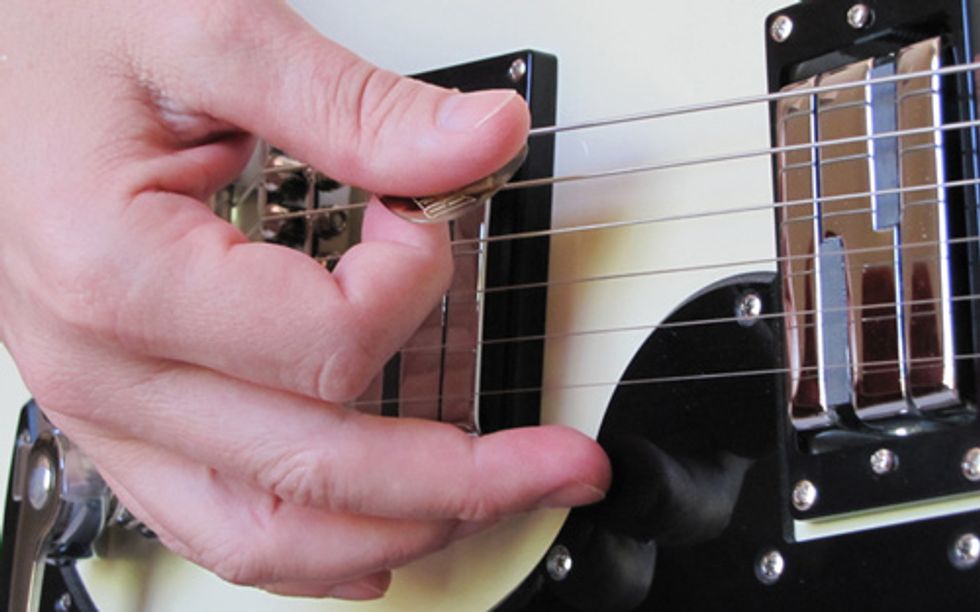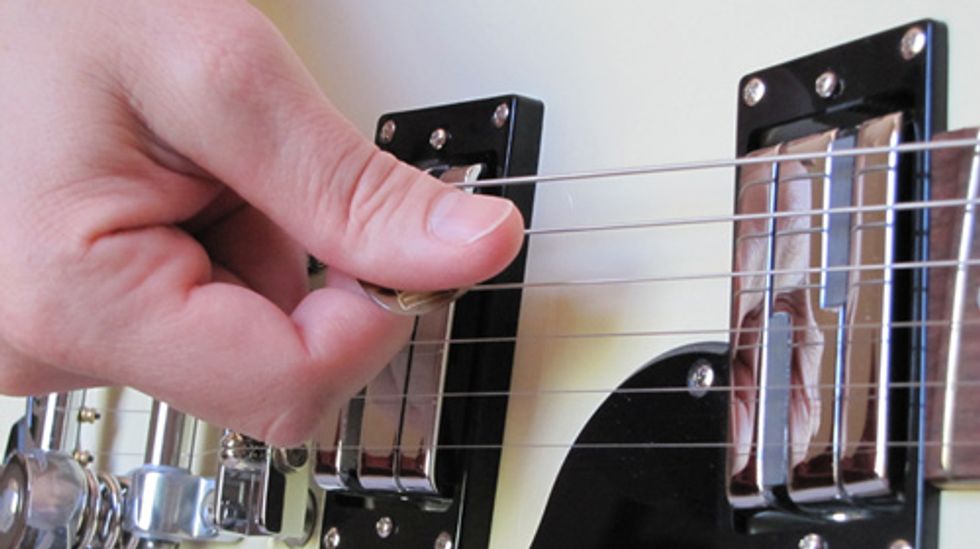Different ways of approaching picking and picks to refine that final bit of your tone and technique
I recently had a double epiphany…something of a rare occurrence in my life, let alone my guitar playing. Oddly they both revolved around the guitar pick, or should I say they revolved around picking and the pick. Before diving into this subject I want to address the fact that many of us have been playing for a long time (30 years for me) and, while we love to learn new techniques and styles, for the most part we have settled in on our basic way of playing the instrument and know our way around it. That said it’s the constant pursuit of the extra 5% that makes the journey a never-ending quest, and probably a good reason why we continue to stick to it, thrive, and enjoy it! So, what’s all this pick business about?
The Technique
For pretty much my entire time playing guitar I’ve employed one basic picking technique. Using the thumb and index finger to grab it, I tuck the index finger back forming a small “V” and expose a small amount of the tip of the pick to strike the strings. My middle finger is extended downward and scratches the top of the guitar moving in concert with my wrist like a pendulum. The middle finger’s purpose is to keep the height of the pick steady so it doesn’t fall into the strings and get caught up. I learned this so long ago from my first (and best) teacher, Jim Bedford, and it has really helped to keep my playing accurate and clean. However, along the way I developed a bit of a bad habit with this technique by exposing too little of the pick and actually striking the string first with a bit of my index fingernail before the actual pick! Not good. As you can imagine this type of interference not only slows down the pick, it also muddies up the notes coming out because they are being double-struck. Most of the time it doesn’t come across as a double note, but it doesn’t have as much clarity (we’re still talking in small changes here) as it could. Mind you, I still use this original technique for single note runs and soloing, but for rhythm playing something new came to me last month.

The original technique.
The New Technique
This new technique isn’t entirely new, but more of a variation on a theme. Imagine that same way of picking but instead of the middle finger anchoring, it’s lifted up and tucked into the right hand. Now the wrist is completely free and can strum quickly or snap chords out without being hung up in the strings. It’s almost completely backwards to the way I learned because it no longer would seem to offer the type of control I’m so used to. However, it actually frees me up and by exposing a little more of the pick I have a much more precise and powerful attack on notes. Playing “Pinball Wizard” has never been so easy!

The new technique.
A New Pick
While looking through a recent issue of Premier Guitar I saw an ad for Red Bear Trading Company picks. To be 100% honest I’ve always been skeptical about high dollar guitar cables, high-end strings and certainly guitar picks. If Hendrix could pull it off with a stock Strat, coil cord and his teeth, why would I need any more? Well, not too long ago I got schooled on higher quality guitar cables, so I won’t argue that, but guitar picks for $20 and up? Seriously? Since I’m always down for a good experiment and that elusive 5% increase in ability or tone, I decided to give it a shot. After speaking with Dave Skowron at Red Bear he gave me the scoop on their picks. I decided on a classic shape like the typical Fender Heavy that I’ve been using forever. $20 plus shipping, and a few days later the pick was here at my place. After spending a little while with my regular pick getting acclimated, I switched over to the Red Bear. C’mon, really? Notes were clearer, the pick slid off the strings like glass and there was nothing on the edge of the pick that got in the way of the notes. No rough edges, no sticking, nothing. Going back to my old pick felt labored and it was instantly clear that I was hooked. With the combination of the new technique and the smooth and even attack of the new pick it was a double-whammy of wonder.
So what’s the moral of the story here? It’s not to just go out and buy a new piece of gear in hopes of completely changing your abilities. It’s that the extra 5% (or more) that we’re all looking to gain comes from the fine adjustments and refinements over time. I can absolutely say that I never expected such amazing changes to happen from such simple adjustments. My playing is now at the best it’s ever been, and that is an inspiring place to be.
